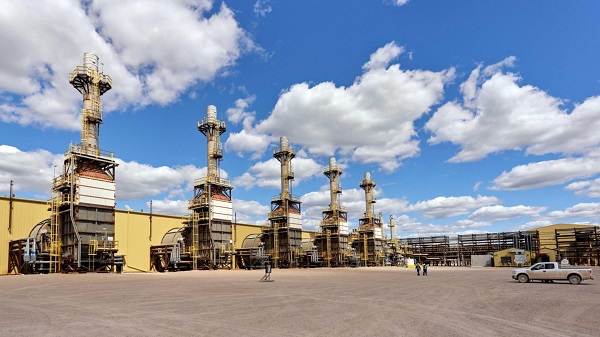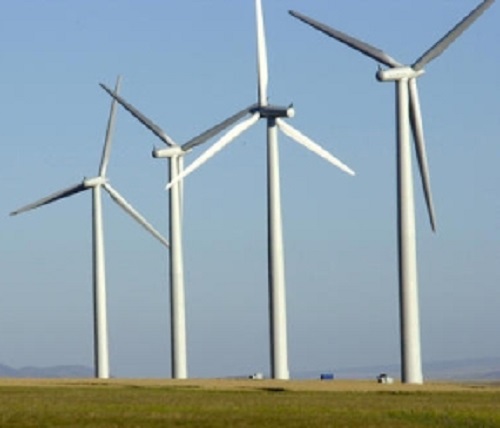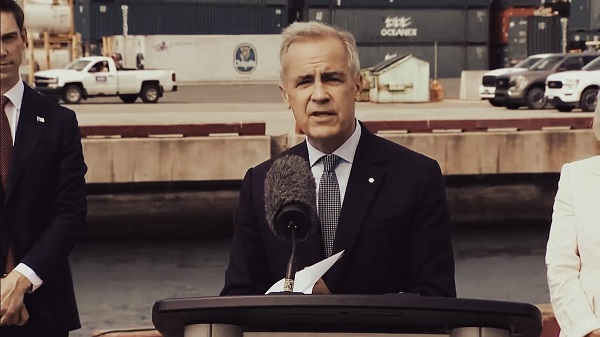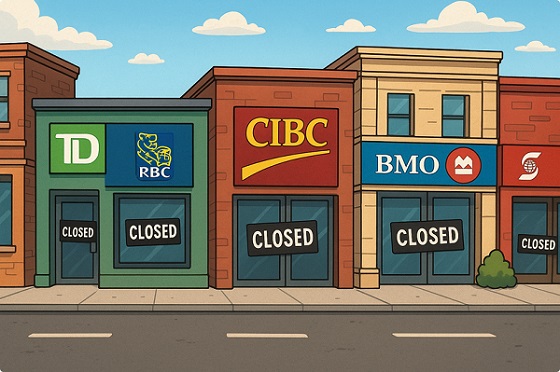Canadian Energy Centre
Report: Oil sands, Montney growth key to meet rising world energy demand

Cenovus Energy’s Sunrise oil sands project in northern Alberta
From the Canadian Energy Centre
By Will Gibson
‘Canada continues to be resource-rich and competes very well against major U.S. resource bases’
Canadian Energy Centre
Emissions cap will end Canada’s energy superpower dream

From the Canadian Energy Centre
By Will Gibson
Study finds legislation’s massive cost outweighs any environmental benefit
The negative economic impact of Canada’s proposed oil and gas emissions cap will be much larger than previously projected, warns a study by the Center for North American Prosperity and Security (CNAPS).
The report concluded that the cost of the emissions cap far exceeds any benefit from emissions reduction within Canada, and it could push global emissions higher instead of lower.
Based on findings this March by the Office of the Parliamentary Budget Officer (PBO), CNAPS pegs the cost of the cap to be up to $289,000 per tonne of reduced emissions.
That’s more than 3,600 times the cost of the $80-per-tonne federal carbon tax eliminated this spring.
The proposed cap has already chilled investment as Canada’s policymakers look to “nation-building” projects to strengthen the economy, said lead author Heather Exner-Pirot.
“Why would any proponent invest in Canada with this hanging over it? That’s why no other country is talking about an emissions cap on its energy sector,” said Exner-Pirot, director of energy, natural resources and environment at the Macdonald-Laurier Institute.
Federal policy has also stifled discussion of these issues, she said. Two of the CNAPS study’s co-authors withdrew their names based on legal advice related to the government’s controversial “anti-greenwashing” legislation.
“Legitimate debate should not be stifled in Canada on this or any government policy,” said Exner-Pirot.
“Canadians deserve open public dialogue, especially on policies of this economic magnitude.”
Carbon leakage
To better understand the impact of the cap, CNAPS researchers expanded the PBO’s estimates to reflect impacts beyond Canada’s borders.
“The problem is something called carbon leakage. We know that while some regions have reduced their emissions, other jurisdictions have increased their emissions,” said Exner-Pirot.
“Western Europe, for example, has de-industrialized but emissions in China are [going up like] a hockey stick, so all it’s done is move factories and plants from Europe to China along with the emissions.”
Similarly, the Canadian oil and gas production cut by the cap will be replaced in global markets by other producers, she said. There is no reason to assume capping oil and gas emissions in Canada will affect global demand.
The federal budget office assumed the legislation would reduce emissions by 7.1 million tonnes. CNAPS researchers applied that exclusively to Canada’s oil sands.
Here’s the catch: on average, oil sands crude is only about 1 to 3 percent more carbon-intensive than the average crude oil used globally (with some facilities emitting less than the global average).
So, instead of the cap reducing world emissions by 7.1 million tonnes, the real cut would be only 1 to 3 percent of that total, or about 71,000 to 213,000 tonnes worldwide.
In that case, using the PBO’s estimate of a $20.5 billion cost for the cap in 2032, the price of carbon is equivalent to $96,000 to $289,000 per tonne.
Economic pain with no environmental gain
Exner-Pirot said doing the same math with Canada’s “conventional” or non-oil sands production makes the situation “absurd.”
That’s because Canadian conventional oil and natural gas have lower emissions intensity than global averages. So reducing that production would actually increase global emissions, resulting in an infinite price per tonne of carbon.
“This proposal creates economic pain with no environmental gain,” said Samantha Dagres, spokesperson for the Montreal Economic Institute.
“By capping emissions here, you are signalling to investors that Canada isn’t interested in investment. Production will move to jurisdictions with poorer environmental standards as well as bad records on human rights.”
There’s growing awareness about the importance of the energy sector to Canada’s prosperity, she said.
“The public has shown a real appetite for Canada to become an energy superpower. That’s why a June poll found 73 per cent of Canadians, including 59 per cent in Quebec, support pipelines.”
Industries need Canadian energy
Dennis Darby, CEO of Canadian Manufacturers & Exporters (CME), warns the cap threatens Canada’s broader economic interests due to its outsized impact beyond the energy sector.
“Our industries run on Canadian energy. Canada should not unnecessarily hamstring itself relative to our competitors in the rest of the world,” said Darby.
CME represents firms responsible for over 80 per cent of Canada’s manufacturing output and 90 per cent of its exports.
Rather than the cap legislation, the Ottawa-based organization wants the federal government to offer incentives for sectors to reduce their emissions.
“We strongly believe in the carrot approach and see the market pushing our members to get cleaner,” said Darby.
Business
Ontario leaders back East–West corridor linking Alberta energy across the country

Matthew Slotwinski, CEO of the Sarnia-Lambton Economic Partnership. Photo courtesy SLEP
From the Canadian Energy Centre
‘The sooner this gets done, the better’
From his desk in Marathon, Ont., a small community on the north shore of Lake Superior, Mayor Rick Dumas sees the concept of an energy corridor to Western Canada’s oil and gas as a chance to reshape his region’s future.
The Ontario government issued a request for proposals on August 7 for a feasibility study into the idea, which would move energy products from across the Prairies and Northern Ontario to consumers and exporters in the East.
“Projects like the East-West Energy Corridor are exactly what Northwestern Ontario has been calling for — an opportunity to be at the forefront of a nation-building initiative,” said Dumas, who is also president of the Northwestern Ontario Municipal Association, representing the districts of Kenora, Rainy River and Thunder Bay.
“It means new jobs, greater economic opportunity, and a real commitment to building a cleaner, stronger, and more resilient country together.”
The feasibility study will map potential pipeline routes linking Alberta to Southern Ontario’s refining sector and new tidewater ports, including on James Bay, Hudson Bay and the Great Lakes.
It will also assess the construction or expansion of a refinery, examine Indigenous equity opportunities, and even explore the creation of a Canadian strategic petroleum reserve.
Support for the corridor also comes from Southern Ontario, where the region’s petrochemical and energy industries depend on oil and gas supplies delivered by a pipeline that crosses Michigan.
“We believe this represents an opportunity to achieve both energy security for Ontario and Canada, and economic growth and diversification potential,” said Matthew Slotwinski, CEO of the Sarnia-Lambton Economic Partnership.
“Long-term, reliable and secure feedstock supply is necessary for the sustained success and potential growth of our current operations.”
The Sarnia-Lambton region is home to Ontario’s largest concentration of energy infrastructure, including refineries, chemical plants, power generators, and Enbridge Gas’s Dawn Hub, where much of the province’s natural gas supply is gathered for commercial distribution.
The region is also exploring new opportunities in liquefied natural gas (LNG), hydrogen, and alternative fuels.
“Very few of Ontario’s cars would drive, flights would fly, or homes would be heated without the products that originate from the Sarnia-Lambton energy and chemistry complex,” Slotwinski said.
“Our industry leaders need to be front and centre in identifying how they can be harnessed as part of any nation-building exercise.”
Labour groups are also throwing their weight behind the energy corridor initiative, pointing out that Michigan’s governor wants to shut down the pipeline that carries Canadian oil and gas through its borders.
Mike Gallagher, business manager of the International Union of Operating Engineers (IUOE) Local 793, told CBC that he supports the corridor as a source of jobs and independence.
“As far as I’m concerned, the sooner this gets done, the better,” he said.
“A new pipeline would not only create jobs, it would strengthen our country’s independence and is exactly the kind of nation-building project that Prime Minister Carney promised to deliver.”
-

 Alberta2 days ago
Alberta2 days agoOttawa’s destructive federal energy policies and Premier Danielle Smith’s three part solution
-

 Agriculture2 days ago
Agriculture2 days agoIn the USA, Food Trumps Green Energy, Wind And Solar
-

 Business21 hours ago
Business21 hours agoMark Carney’s Climate Competitiveness Pitch Falls Flat
-

 Banks2 days ago
Banks2 days agoDebanking Is Real, And It’s Coming For You
-

 Business18 hours ago
Business18 hours agoCanada Post is broken beyond repair
-

 Canadian Energy Centre2 days ago
Canadian Energy Centre2 days agoEmissions cap will end Canada’s energy superpower dream
-

 Business17 hours ago
Business17 hours agoHealth-care costs for typical Canadian family will reach over $19,000 this year
-

 Alberta20 hours ago
Alberta20 hours agoMaritime provinces can enact policies to reduce reliance on Alberta… ehem.. Ottawa







